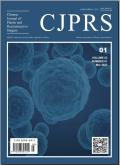Development and validation of the Chinese version of the Clinician-reported submental fat rating scale
Chinese Journal of Plastic and Reconstructive Surgery
Pub Date : 2025-03-01
DOI:10.1016/j.cjprs.2024.12.003
引用次数: 0
Abstract
Background
Excess submental fat (SMF) is a common facial aesthetic concern, and assessment scales play a crucial role in its evaluation. Existing SMF scales are based on Caucasian populations, although genetic background significantly influences SMF distribution. Therefore, this study aimed to develop and validate a 5-point Chinese version of the Clinician-Reported Submental Fat Rating Scale (CR-SMFRS).
Methods
The study included 150 volunteers, and captured photographs from the frontal, oblique, and lateral views were combined for each participant. A 5-point scale with descriptive criteria was primarily designed. Internal validation involved three experienced plastic surgeons, while external validation was conducted on 50 live volunteers by six additional raters. Intra- and inter-rater reliability were assessed.
Results
A 5-point grading system with descriptive criteria was developed and validated as the Chinese CR-SMFRS. Internal validation demonstrated a good intra- and inter-rater consistency. During external validation, intraclass correlation coefficient values for each rater exceeded 0.850, indicating high intra-rater consistency. Moreover, the inter-rater reliability showed good consistency.
Conclusion
The Chinese version of the SMF rating scale is a reliable tool for clinical use.
临床报告心理下脂肪评定量表中文版的开发与验证
背景颏下脂肪过多(SMF)是一个常见的面部美学问题,评估量表在其评估中起着至关重要的作用。尽管遗传背景对SMF分布有显著影响,但现有的SMF量表是基于高加索人群的。因此,本研究旨在开发和验证一个5分的中文版临床报告心理下脂肪评定量表(CR-SMFRS)。方法本研究包括150名志愿者,并对每个参与者的正面、倾斜和侧面照片进行组合。首先设计了一个带有描述性标准的5分制量表。内部验证由三名经验丰富的整形外科医生参与,而外部验证由另外六名评分员对50名志愿者进行。评估了内部和内部的信度。结果建立了具有描述性标准的5分制评定体系,并经验证为中国CR-SMFRS。内部验证显示了良好的内部和内部一致性。外部验证时,各评分者的类内相关系数值均超过0.850,表明评分者的类内一致性较高。量表间信度具有较好的一致性。结论中文版SMF评定量表是临床使用的可靠工具。
本文章由计算机程序翻译,如有差异,请以英文原文为准。
求助全文
约1分钟内获得全文
求助全文
来源期刊

Chinese Journal of Plastic and Reconstructive Surgery
Surgery, Otorhinolaryngology and Facial Plastic Surgery, Pathology and Medical Technology, Transplantation
CiteScore
0.40
自引率
0.00%
发文量
115
审稿时长
55 days
 求助内容:
求助内容: 应助结果提醒方式:
应助结果提醒方式:


